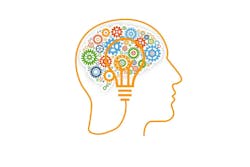Scientists describe brain mechanisms for organizing memories in time
Researchers at the University of California, Irvine have discovered fundamental mechanisms by which the hippocampus region of the brain organizes memories into sequences and how this can be used to plan future behavior. The finding may be a critical early step toward understanding memory failures in cognitive disorders such as Alzheimer’s disease and other forms of dementia.
Combining electrophysiological recording techniques in rodents with a statistical machine learning analysis of huge troves of data, the UCI researchers uncovered evidence suggesting that the hippocampal network encodes and preserves progressions of experiences to aid in decision-making. The team’s work is the subject of a paper published recently in Nature Communications.
“Our brain keeps a pretty good record of when specific experiences or events occur. This ability helps us function in our daily life, but before this study, we didn’t have a clear idea of the neuronal mechanisms behind these processes,” said corresponding author Norbert Fortin, UCI Associate Professor of Neurobiology and Behavior. “Where it connects with everybody is that this type of memory is strongly impaired in a variety of neurological disorders or simply with aging, so we really need to know how this brain function works.”
The project, which took more than three years to complete, involved experimental and data analysis phases. The researchers monitored the firing of neurons in rats’ brains as they underwent a series of odor identification tests. By presenting five different smells in various sequences, the scientists were able to measure the animals’ memory of the correct sequence and detect how their brains captured these sequential relationships.
Obtained in millisecond intervals over several minutes, neuronal activity and inactivity measurements present a dynamic picture of the brain’s functioning. Fortin said that he and his colleagues were, in some ways, able to “read the minds” of their subjects by viewing the “coding” of the cells — which ones were firing, and which were not — in rapid succession.
Senior co-author Babak Shahbaba, UCI Chancellor’s Fellow and Professor of Statistics, said, “These emerging neuroscience studies rely on data science methods because of the complexity of their data. Brain activities are recorded at millisecond scale, and these experiments run for more than an hour, so you can imagine how fast the amount of data grows. It gets to a point that neuroscientists need more advanced techniques to accomplish what they had imagined but weren’t able to implement.”
He noted that when neurons encode information such as memories, scientists can get a glimpse of that process by examining the pattern of spiking activity across all recorded neurons, known collectively as an ensemble.
“We found that we could treat these neural patterns as images, and this unlocked our ability to apply deep machine learning methods,” Shahbaba said. “We analyzed the data with a convolutional neural network, which is a methodology used frequently in image processing applications such as facial recognition.”
This way, the researchers were able to decode the firing of neurons to retrieve information.
“We know what the signature for odor B looks like, just as we know the ones for A, C and D,” Fortin said. “Because of that, you can see when those signatures reappear at a different moment in time, such as when our subjects are anticipating something that has yet to happen. We’re seeing these signatures being quickly replayed as they’re thinking about the future.”

